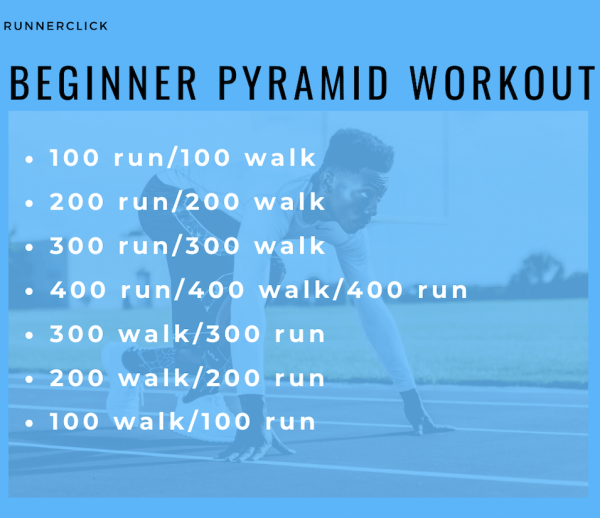How To Plan Your Track Workouts

Whether you are new to running or an old pro, you should consider adding track workouts to your workout regiment if you are not already. Track, or any type of speed work really, can bring your running to a whole new level. Sure, fartleks and tempo runs will help you become a stronger runner. But time on the track is an entirely different dimension!
Why Do Track Workouts?
Workouts you do on the track will help you get faster, they are good for working on pace and also will make you a more confident runner. First, let’s talk about speed.
Let’s be honest here. You get faster by running fast. Sure, there is room in every workout week for a mixture of workouts. You need to do some easy running. However, if you neglect to insert the speed work you will likely find yourself stagnant. When you are doing track workouts, there are really two basic ways to look at it. You are either doing “pure speed,” where you have ample opportunity to rest and are either back to resting heart rate or close to it, or your rest intervals are shorter.

With the shorter rest intervals between bits of speed, you are running in a fatigued state. The work you do when you are still recovering builds your stamina in a different way.
Note from Coach Wiliarty: “How long you want to rest between intervals depends on how hard you want the workout to be; something like half as long as the time you spent running to about as long as you spent running. Shorter rests obviously make the workout more difficult.”
If you are trying to hone in on a certain pace, track can help you with that. For example, your coach might have you do mile repeats at a goal pace. Why?
Because the more time you spend at a certain pace, the more natural it becomes. Some of my favorite Nike Running App workouts tell you to run by pace. Depending on the workout, you may be running the timed interval at a perceived exertion or at a set pace (such as mile pace, 5K pace, 10K pace, etc.).
When I say that track work builds confidence, make no mistake: I don’t mean every second. In fact, some track workouts themselves will bring you into some serious doubt about your ability to complete the workout. Do not dwell on those moments. Overall, time on the track leaves you feeling stronger and at a heightened level of badassery.
How Should a Beginner Run Track?
The first rule of thumb for a beginner is not to start off too enthusiastically. I mean, okay enthusiasm is great. Maybe the right word of warning is not to start too aggressively.
Taking it relatively easy for your first few track workouts is a good decision. Of course, rule number 1 of track workouts is to always warm up properly. The last thing you want to do is end up injured.
Easy/Hard 400s: Some great beginner workouts are fairly simple to do. You might start out just heading to the track and doing alternating laps around the track by easy, then hard, efforts. Yes, it is as easy as it sounds. Run a lap easy, then run a lap hard. If you are routinely running 3-5 miles, you might warm up for a mile, do 6 laps alternating easy/hard, then do a couple of laps super easy cooldown. See how that feels!
Beginner Pyramid: One of my favorite track workouts to introduce newbies to is a simple track pyramid. Before jumping into this workout, you need to have general knowledge about a track. If you walk around, you will notice certain lines marking spots you will want to note.
On the main straightaway, you will see a starting line for the 100-meter dash. Near the finish line of the 100, you will see staggered starts for the 400m dash. As you work your way around, you should see starting lines for the 300-meter hurdles, as well as the 200-meter dash. Make mental notes of where these all are.
After you have warmed up, you start at the start line of the 100-meter dash. Run 100 hard. Then walk 100 meters. It’s easy to mark. If you start at the 100 m dash starting line, you start walking at the start of the 400. Then you walk to the start of the 300 hurdles. Guess what you do next? 200 meters hard. After that, 200 walking.
Here is the workout:

If you have a fancy smartwatch, you may wish to hit the lap button for each interval. It will be interesting for you to see if your run intervals on the back end of the pyramid are as fast as those on the front end.
How Do I Get Better at Track?
A friend of mine has an expression because she is a fitness trainer and she LOVES to have people do pushups. When someone whines that they hate them, she always says the same thing, “You know how you get better at pushups? MORE PUSHUPS!” The same is true of track workouts.
The only way to get stronger on the track is to consistently incorporate track into your workout routine.
Taking that Next Step
Once you are no longer a beginner, it is time to take your track work to the next level. If you are writing your own workouts, you need to ask yourself why you are doing the workout. As Coach Wiliarty says, “No workout is done in isolation.” What that means is, the workout needs to have a purpose.
A track and field sprinter workout looks much different than someone training for a 10K, which looks different than someone training for a marathon.
More from Coach Wiliarty: If you are training for a 5K goal race, you would figure out your goal time. If your goal time is 22:30, that calculates to 7:15 per mile or 4:30 per kilometer. For your workout, you might run 5 x 1K, and your goal pace would be 4:30 per kilometer. If you are early in your training cycle, you might rest for 4:00 or 4:30 between intervals. As you get closer to your goal race, you might only rest 2:15.

What if you are training for a marathon? Well, then you are more likely to run longer intervals on the track. Mile repeats, for example, are great for marathon training. You may even find yourself doing speed work that links 2 hard miles together.
The point is, there is no single way to create a track workout. It really depends on a lot of things. Included in this list of considerations are the athlete’s present level of fitness, the goals of the runner, where you are in the training cycle, and where this particular workout fits within the week of training.
No two athletes or their running plans ever need to look completely the same. The workout can be as individual as you are!
Latest Articles
 Is Running on a Treadmill Easier Than Running Outside?Runners have their own preferences, whether it is treadmill running, running outside on the road, or exploring trails. So...
Is Running on a Treadmill Easier Than Running Outside?Runners have their own preferences, whether it is treadmill running, running outside on the road, or exploring trails. So... Is It OK to Use Trail Running Shoes on the Road?While trail running shoes can be used on roads, especially in situations where a runner encounters mixed terrains or pref...
Is It OK to Use Trail Running Shoes on the Road?While trail running shoes can be used on roads, especially in situations where a runner encounters mixed terrains or pref... How to Fix Sore Quads After Running?Rest, ice, gentle stretching, and over-the-counter pain relievers can help soothe sore quads after running. Also, ensure ...
How to Fix Sore Quads After Running?Rest, ice, gentle stretching, and over-the-counter pain relievers can help soothe sore quads after running. Also, ensure ... 10 Fruits With The Most Electrolytes to Replace Sports DrinksThese fruits are high in electrolytes such as potassium, magnesium, and calcium, essential for hydration, muscle function...
10 Fruits With The Most Electrolytes to Replace Sports DrinksThese fruits are high in electrolytes such as potassium, magnesium, and calcium, essential for hydration, muscle function...

